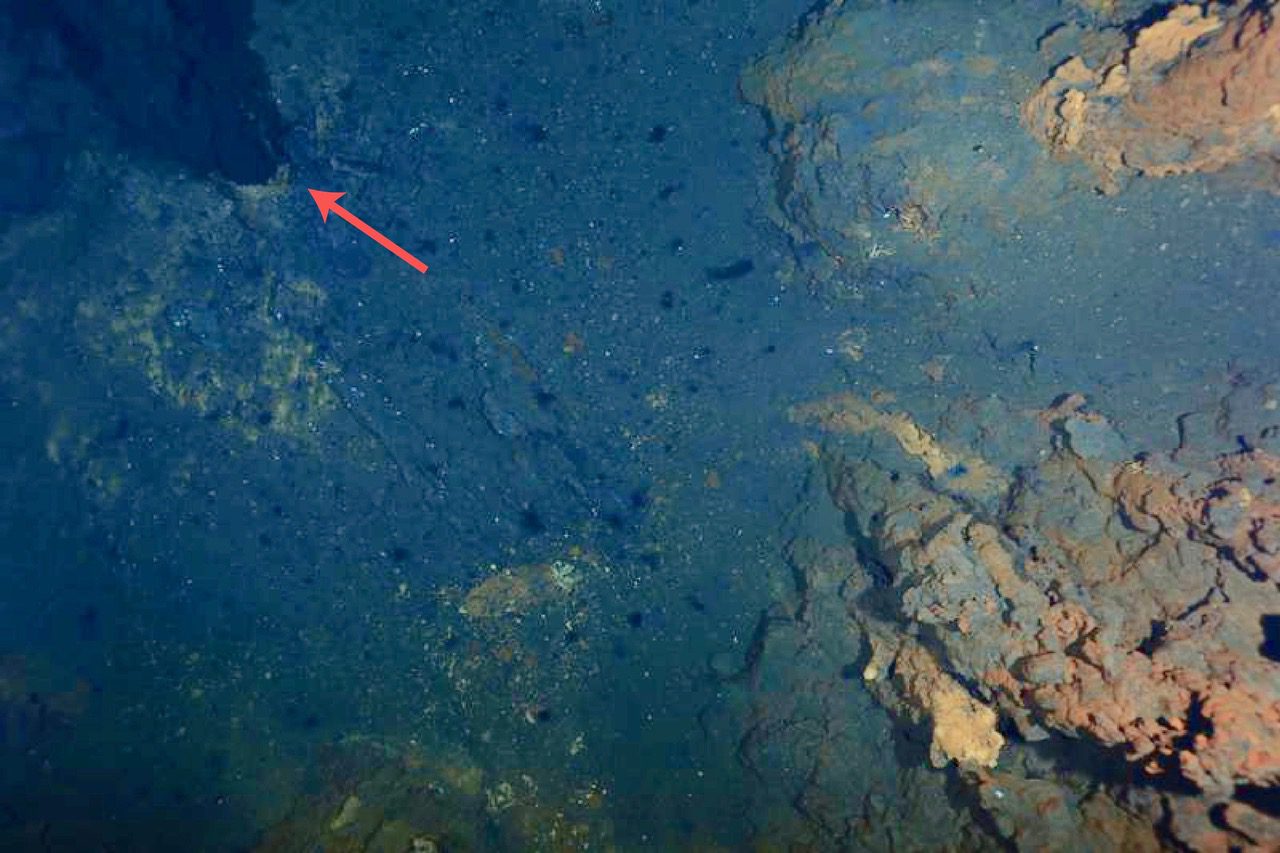Members of the Sulfurimonas group of bacteria have found a way to thrive in the smoky plumes at the bottom of the ocean, even without other sources of food. These bacteria have a genome beautifully adapted to living in an environment too oxygen-rich for their relatives. These plumes could have counterparts in the depths of Enceladus and Europa’s internal oceans; theoretically, life there may be food chains built on organisms similar to these.
At tectonic plate boundaries in the deep ocean, hot minerals spew into the water from hydrothermal vents. The organisms that live here get their energy from the chemicals being released, rather than from the Sun. The immediate surrounds of the vents have been studied intensely since their discovery, but the giant plumes that rise for hundreds of meters have been relatively neglected.
In a new paper, researchers from the Max Planck Institute for Marine Microbiology have shown a member of the genus Sulfurimonas can oxidize hydrogen and other gasses in the plume, surviving even when oxygen is abundant.
As its name suggests, Sulfurimonas’s best-known species source their energy from sulfide. Prior to investigations by Dr Massimilano Molari and co-authors, it was only known from low-oxygen environments such as immediately around hydrothermal vents. However, traces of their genes had also been found in the plumes.
“It was assumed that they were flushed there from seafloor vent-associated environments. But we wondered whether the plumes might actually be a suitable environment for some members of the Sulfurimonas group,” Molari said in a statement.
Researchers undertook the difficult task of sampling plumes over 2,500 meters (8,202 feet) beneath the surface of the Arctic Ocean and the South Atlantic, often having to dodge sea ice in the process. They identified a new species they have named USulfurimonas pluma (the U indicating it has not been successfully cultivated, unsurprisingly considering the differences between its native environment and the lab).
S. pluma differs from the other members of its genus in tolerating oxygen, even if it doesn’t love it, and using hydrogen as its energy source. It’s suspected that it evolved from an ancestor that lived closer to a vent; evolving to occupy (and thrive) in plumes that can travel for thousands of kilometers would have been a great way to disperse worldwide.
Aurora’s hydrothermal vents (red arrow) at Gakkel Ridge (Central Arctic). and chimneys (yellow-orange structures on the right) captured by the underwater camera system OFOS, which was used to find the vents so samples could be taken from the plumes. Image Credit: Cruise report.
Just as plants and algae serve as primary producers in sunlit ecosystems, transforming photons into sorts of energy animals or fungi can make use of, Sulfurimonas may do something similar with hydrogen. In regions where almost no biological material falls from the surface, Sulfurimonas could represent the food web’s base.
Sampling from vents up to 4,000 meters below the surface, such as those at the Gakkel Ridge, is hard enough. Harder when you have to navigate ice flows, as the Polarstern research vessel had to do in the Greenland Ice. Image Credit: Alfred Wegener Institute / Stefanie Arndt.
There is reason to suspect hydrogen was the first source of energy for life, long before anything was sophisticated enough to perform photosynthesis. Most planetary hydrogen is bound up with other elements or escapes into space – but as the most abundant element in the universe, molecular traces can turn up in unexpected places, including in Enceladus’ geysers. Consequently, similar organisms may well be crucial to life on other worlds as well.
Dr Chris German of the Woods Hole Oceanographic Institution, who was not involved in the research, told Space.com that The discovery “removes an intellectual barrier from our ability to conceive that something comparable could arise elsewhere in the solar system.”
“Obviously, they have found an ecological niche in cold, oxygen-saturated and hydrogen-rich hydrothermal plumes”, Molari said; “That means we have to rethink our ideas on the ecological role of Sulfurimonas in the deep ocean – they might be much more important that we previously thought.”
The study is published in the journal Nature Microbiology
Source Link: Newly-Discovered Volcanic Plume-Dwelling Bacteria Boost Prospects For Life Within Icy Moons
